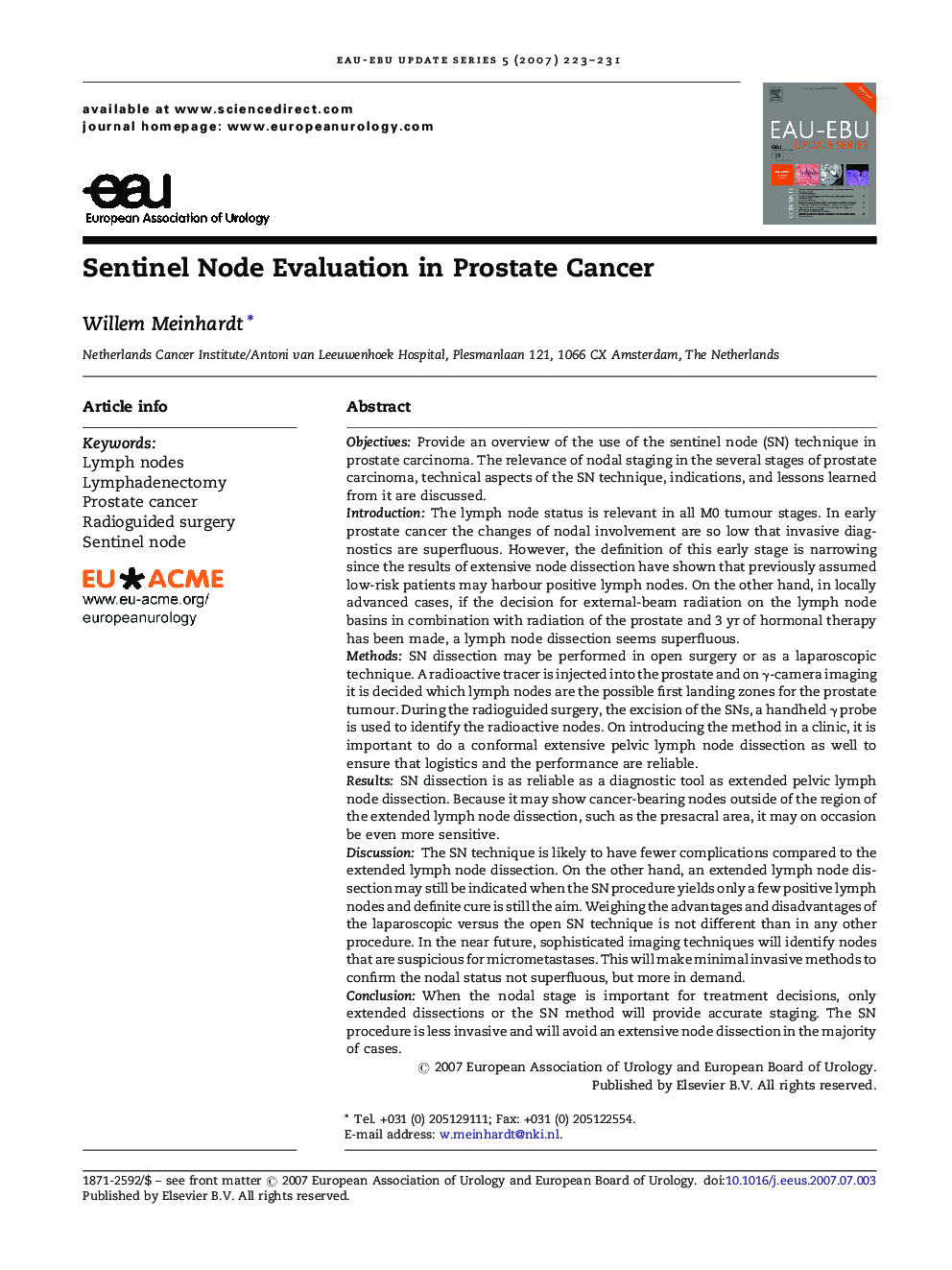| Article ID | Journal | Published Year | Pages | File Type |
|---|---|---|---|---|
| 3918908 | EAU-EBU Update Series | 2007 | 9 Pages |
ObjectivesProvide an overview of the use of the sentinel node (SN) technique in prostate carcinoma. The relevance of nodal staging in the several stages of prostate carcinoma, technical aspects of the SN technique, indications, and lessons learned from it are discussed.IntroductionThe lymph node status is relevant in all M0 tumour stages. In early prostate cancer the changes of nodal involvement are so low that invasive diagnostics are superfluous. However, the definition of this early stage is narrowing since the results of extensive node dissection have shown that previously assumed low-risk patients may harbour positive lymph nodes. On the other hand, in locally advanced cases, if the decision for external-beam radiation on the lymph node basins in combination with radiation of the prostate and 3 yr of hormonal therapy has been made, a lymph node dissection seems superfluous.MethodsSN dissection may be performed in open surgery or as a laparoscopic technique. A radioactive tracer is injected into the prostate and on γ-camera imaging it is decided which lymph nodes are the possible first landing zones for the prostate tumour. During the radioguided surgery, the excision of the SNs, a handheld γ probe is used to identify the radioactive nodes. On introducing the method in a clinic, it is important to do a conformal extensive pelvic lymph node dissection as well to ensure that logistics and the performance are reliable.ResultsSN dissection is as reliable as a diagnostic tool as extended pelvic lymph node dissection. Because it may show cancer-bearing nodes outside of the region of the extended lymph node dissection, such as the presacral area, it may on occasion be even more sensitive.DiscussionThe SN technique is likely to have fewer complications compared to the extended lymph node dissection. On the other hand, an extended lymph node dissection may still be indicated when the SN procedure yields only a few positive lymph nodes and definite cure is still the aim. Weighing the advantages and disadvantages of the laparoscopic versus the open SN technique is not different than in any other procedure. In the near future, sophisticated imaging techniques will identify nodes that are suspicious for micrometastases. This will make minimal invasive methods to confirm the nodal status not superfluous, but more in demand.ConclusionWhen the nodal stage is important for treatment decisions, only extended dissections or the SN method will provide accurate staging. The SN procedure is less invasive and will avoid an extensive node dissection in the majority of cases.
